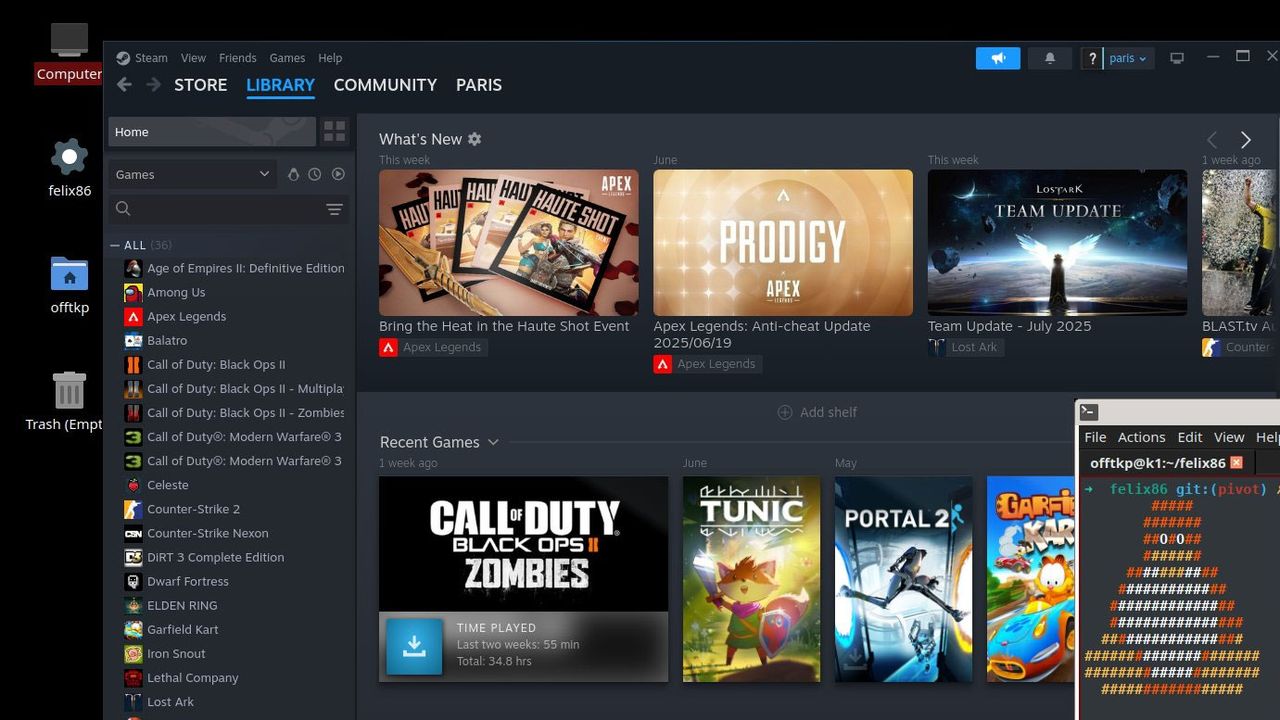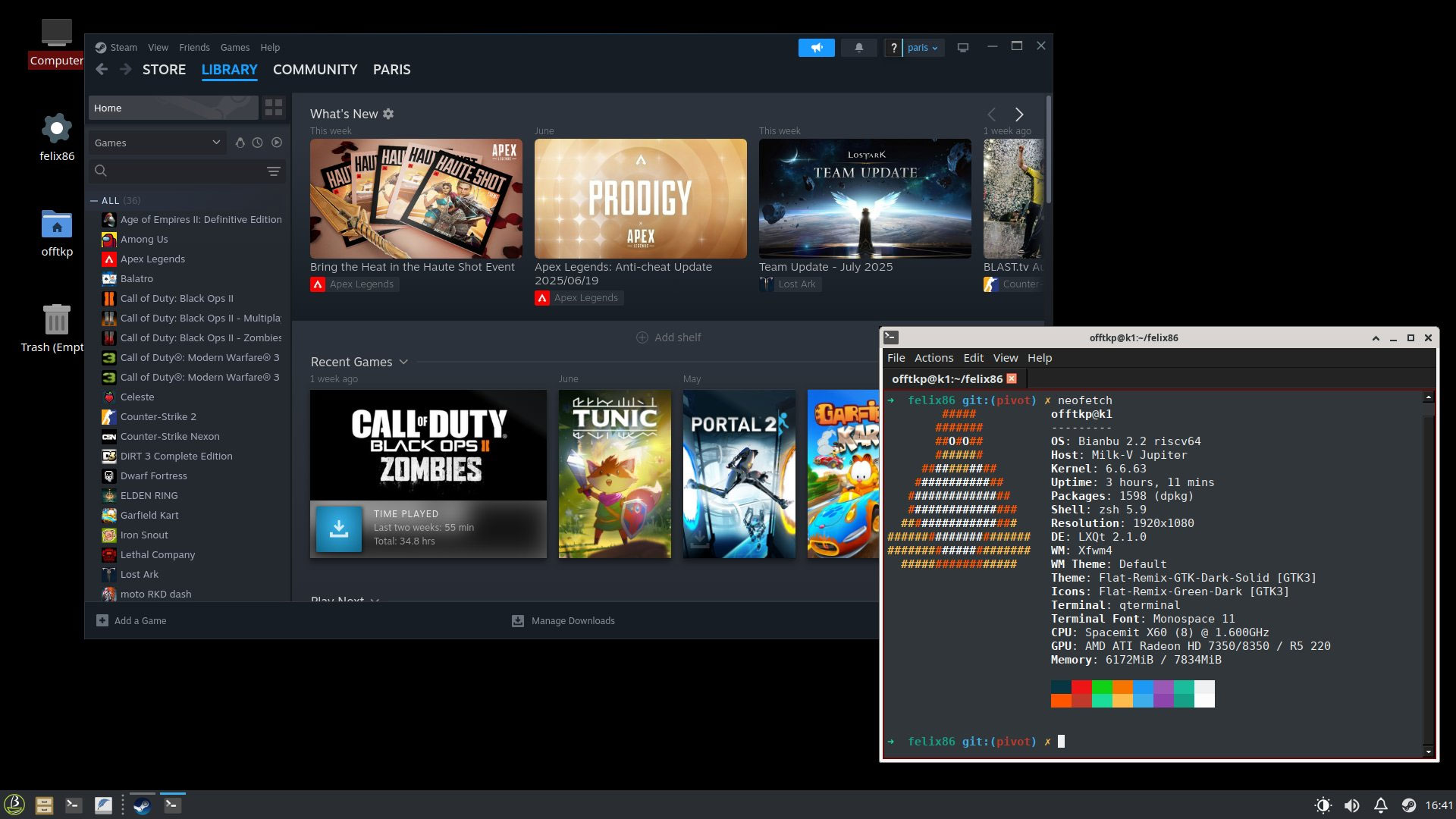
Linux developers have managed to get Steam running on RISC-V-powered platforms. Moreover, some big-name games like The Witcher 3 and Crysis are now playable (h/t GamingOnLinux). Please note, this achievement isn’t due to something as momentous as the Steam Client being ported to the RISC-V architecture. Rather, the Steam client and some games can run on RISC-V due to the increasing quality of the felix86 emulation project.
The Felix86 blog mentions that the emulator has just started delivering playable AAA Windows games, so this is a major breakthrough for the project. Additionally, the devs praise the ‘user-friendliness’ of Felix86, making it quick and easy to get running with your games. Other notable improvements have come to AppImage support and file system emulation.
GamingOnLinux got some tastier, fresher morsels in an email sent by the developers. “We even got the Linux Steam client working, which means games that have Steam DRM can be played on RISC-V with felix86,” wrote a jubilant developer.
If you want to read more and keep up to date with this project’s latest developments, keep an eye on the Felix86 GitHub page, too.


RISC-V, the underdog already powering billions of devices
RISC-V is something of an underdog in the processor architecture race in 2025, but there are glimmers of light, with increasing amounts of sparks. In November 2023, we covered forecasts that there would be more than 16 billion RISC-V-powered devices in the wild by 2030. More recently, we have seen reports that Nvidia will get on the RISC-V train, and China is pushing the adoption of the open-source ISA.
The biggest success for RISC-V, so far, has been its adoption by embedded systems and IoT gadgets, so these chips are already in billions of devices, with little fanfare. Now this platform is edging more into the view of enthusiasts and tinkerers with projects like the DC-ROMA, Milk-V Megrez board, and even Framework, looking for some RISC-V action.
RISC-V is snappier than the dragon
We discussed the ongoing efforts to get Steam gaming onto Arm platforms last September. Hopes were raised among the Arm fraternity when it was noticed that Valve was working on an ARM64 version of Proton dubbed ‘proton-arm64ec-4,’ with good levels of compatibility.
However, it is Apple Silicon that is currently the leading Arm platform for Steam gaming. Valve released the first Steam Client Beta that runs natively on Apple Silicon only last month. Without the emulation layer of the likes of Felix86 and the phasing out of Rosetta 2, though, Steam for Apple Silicon has a way to go before it becomes an appealing gaming destination.
Follow Tom's Hardware on Google News to get our up-to-date news, analysis, and reviews in your feeds. Make sure to click the Follow button.







